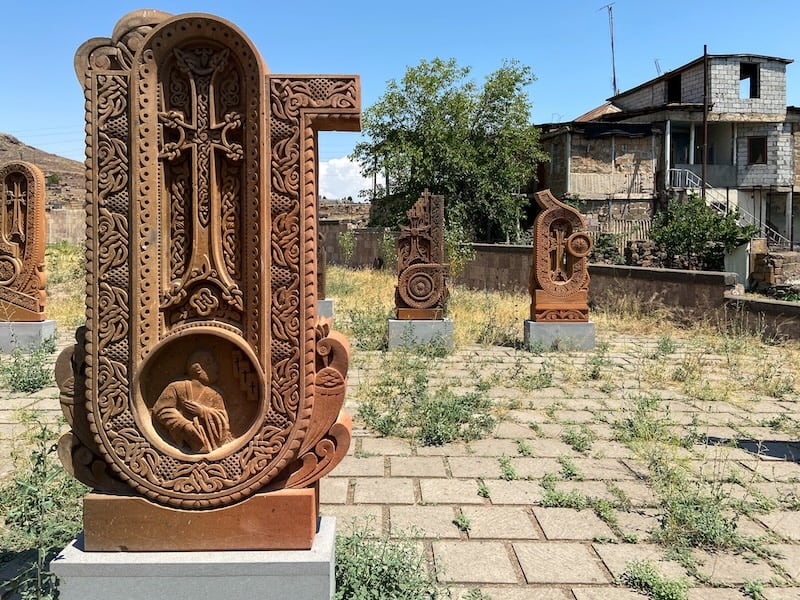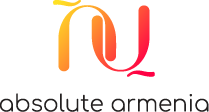Last Updated on August 24, 2025 by Aram Vardanyan
During my childhood, I often heard the Western Armenian dialect and didn’t understand the conversations because I didn’t know what a dialect was. However, over the years, I’ve learned that there are Western and Eastern Armenian dialects.
While many words are similar, there are also many differences between them. In this article, I will talk about the differences between Eastern and Western Armenian and provide examples.
If you’re visiting Armenia for the first time, you might be surprised to learn that not all Armenian speakers can understand each other! Armenian is a rich and diverse language, with unique charm in each region.
While many Armenians living outside of Armenia speak Western Armenian, the most widely spoken dialect in Armenia is Eastern Armenian.
The Differences Between Eastern and Western Armenian
1. Armenian Pronunciation
The first difference Between Eastern and Western Armenian that you’ll notice is the pronunciation of the Armenian alphabet.
For example, the letter ‘գ’ is pronounced ‘g’ in Eastern Armenian and ‘k’ in Western Armenian. Or ‘պ’ is pronounced ‘p’ in Eastern Armenian and ‘b’ in Western Armenian.

Some letters, like ‘ա’ (a), ‘ս’ (s), and ‘ի’ (i), are pronounced the same in both dialects. There are also letters like ‘ռ’ (r) that have a slightly longer tongue roll in Eastern Armenian.
2. Armenian Vocabulary
Most words are similar, but some are different. For example, ‘egg’ in Eastern Armenian is ‘dzu’, while in Western Armenian it is ‘havgit’. The color white is ‘spitak’ in Eastern Armenian and ‘jermag’ in Western Armenian.
These differences can sometimes be funny especially when it comes to Armenian expressions.
For example, ‘little rose’ in Eastern Armenian is ‘vardik’, which sounds like ‘underwear’ (‘vardig’) in Western Armenian. Armenians have a good sense of humor about these things!
3. Armenian Word Order
Word order is technically the same, but each dialect has preferences. For example, Eastern Armenians say ‘good night’ as ‘bari gisher’, while some Western Armenian speakers say ‘kisher pari’ (night good). Both mean the same thing but are expressed differently.
4. Armenian Grammar
Grammar can be the hardest difference. For example, ‘I am running’ is ‘yes vazum em’ in Eastern Armenian and ‘yes ge vazem’ in Western Armenian.

Verbs also change forms. ‘To speak’ is ‘khosel’ in Eastern Armenian and ‘khosil’ in Western Armenian.
5. Borrowed Words in Armenian
Armenian has many borrowed words from other languages. Eastern Armenian speakers, especially in the diaspora, borrow many words from Farsi, while Western Armenian speakers borrow from Arabic.
No matter which dialect you speak (or are learning), Armenian is a beautiful language that deserves to be spoken, celebrated and enjoyed.
[Interested in Eastern or Western Armenian? Try one month free, courtesy of Tun Online Armenian School.] Happy learning!
Should I Learn Eastern or Western Armenian (When Traveling to Armenia)?
Whether to learn Eastern or Western Armenian depends on why you want to learn the language.
If you’re learning Armenian for travel, like visiting Yerevan or exploring Armenia’s beautiful places, we recommend learning Eastern Armenian. In Armenia, the main languages spoken are Eastern Armenian and Russian.
>> Learn Eastern or Western Armenian Online. Try one month free!
If you’re learning Armenian because of a loved one, like a romantic partner, grandparent, or friend, find out which dialect they speak.
For example, ‘hello’ in Eastern Armenian is ‘barev’, and in Western Armenian, it’s ‘parev’. Once you know this, you can learn the dialect they speak so you can practice together.

If you live outside Armenia and want to enjoy Armenian music, movies, books, and comedy, you may need to learn both dialects.
Find out which dialect is spoken in the media you want to enjoy, and then sign up for a learning platform like Tun Online Armenian School, which offers both Eastern and Western Armenian courses. You can even try one month free.
Can I Practice Speaking Armenian with the Locals?
Even if you only know a little Armenian, locals will appreciate you speaking it! In Yerevan, you will hear ‘Barev dzez’ (hello), a great starting point.
From here, you can practice saying ‘Vons es’ (how are you) or ‘Lav’ (good) or ‘Shat lav’ (very good). Below is a list of some common words and phrases to help you:
| English | Eastern Armenian | Western Armenian |
|---|---|---|
| Hello | Barev dzez | Parev |
| How are you | Vons es | Inchbes es |
| Good | Lav | Lav |
| Very good | Shat lav | Shad lav |
| Excuse me | Neretsek | Neretsek |
| Please | Khndrem | Khntrem |
| Thank you | Shnorhakalutyun | Shnorhagalutyun |
| Goodbye | Tstesutyun | Tsdesutyun |
For more easy Armenian phrases in both dialects, download the FREE phrasebook from Tun Online Armenian School, or try one month of Armenian lessons for free.
Armenian is a beautiful language, and you will enjoy learning and speaking it, even if only for a short time while visiting Armenia.

Speaking with the locals will lead to fun interactions and create cherished memories of your time in Armenia.

The funniest is when normal words mean something not so innocent in the other language.
I was thinking the same! 🙂